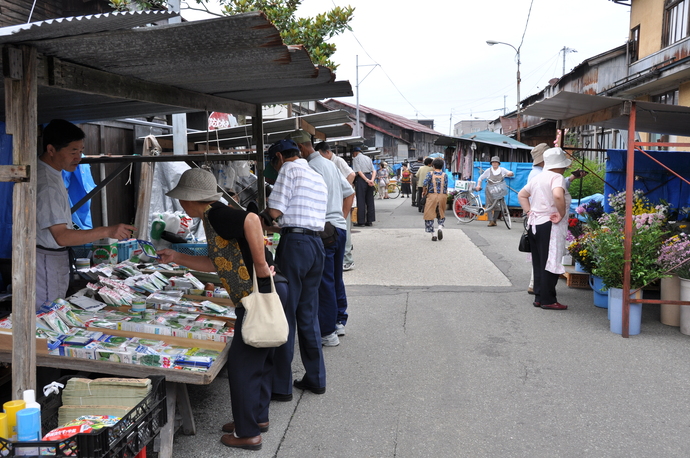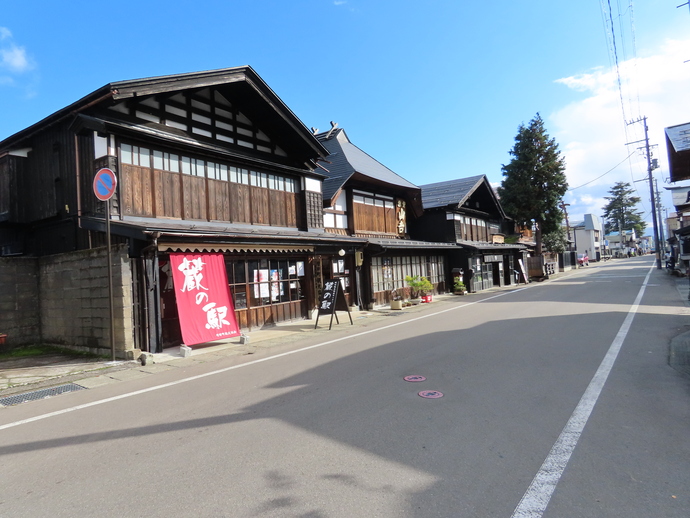Masuda’s Historic Merchant District
Masuda's Historic Merchant District
Masuda's historic merchant residences are striking evidence of the town's long history
as a booming mercantible hub. Masuda flourished between the late seventeenth and early
twentieth centuries, despite its location in one of the snowiest regions of the Japanese
archipelago. This long period of prosperity in a snowy climate is reflected in a unique
architectural feature of Masuda’s residences: large interior storehouses called uchigura.
These characteristic storehouses can be found inside almost every residence on the
historic district’s main street, and many of the historic buildings are still in use as
private residences by families whose merchant lineages stretch back for generations.
Masuda’s economic success was largely the result of its location at the confluence of the
Minase and Naruse Rivers and a junction of the Oyasu and Tegura Highways. The rivers
allowed for efficient distribution of goods, and the roads connected Masuda to the
Sendai domain, from which travelers could reach the capital at Edo (now Tokyo).
Beginning in the 1600s, the town’s economy flourished, and by the latter half of the
nineteenth century, Masuda had become one of the largest producers of tobacco and silk
in Akita domain. The early 1900s brought another economic boom: rich mineral
deposits were discovered in nearby Yoshino, drawing some 9,000 workers to the area.
Masuda's Morning Market
Masuda’s history as a locus of trade and economic activity began with the creation of
the morning market (asaichi) in 1643. Approval for the market was granted by the
domanial government, who recognized that Masuda’s access to major waterways and
roads made it a beneficial location. Visitors to the morning market purchased local
produce and other commodities, but the market was equally important as a place to
exchange news and trade information.
At its busiest, the morning market was held every other day, and dozens of stands lined
both sides of the street. Since then, the economic landscape and the needs of the
customers have changed, and the scale of the market has shrunk. Nonetheless, the
morning market is still held each month on any day ending in a 2, 5, or 9.

Gable-Roofed Merchant Residences
The historic buildings lining Nakananokamachi-dōri, the district’s main street, are
characterized by gabled roofs with central ridgelines that run perpendicular to the street.
This design sheds snow to either side of the house, away from the front entrance, and is
well suited to the area’s snowy climate. Each residence has an earthen-floored hallway
(tōridoma) that stretches along the length of the building. This hallway leads past a large
indoor storehouse called an uchigura, ending in a door that opens to a small garden, an
outdoor storehouse, and finally a gated wall that delineates the border of the property.
Most residences are more or less uniform in width and about 100 meters in depth. These
rows of long, narrow buildings are distinctive of Masuda’s historic district. In 1975, a
nationwide initiative was established to protect the traditional architecture from urban
development, and in 2013, Yokote declared this 10.6-hectare section of Masuda a
Preservation District for Groups of Traditional Buildings.

This English-language text was created by the Japan Tourism Agency.
このページに関するお問い合わせ
商工観光部観光おもてなし課観光企画係
〒013-8601 横手市中央町8番12号(かまくら館5階)
電話:0182-32-2118 ファクス:0182-36-0088
お問い合わせフォームは専用フォームをご利用ください。



